#Big Lion
Text

everyone Shut Up SHUT UP SHUT UP SHUTP SHUTOP
13 notes
·
View notes
Text

Midwestern cousins who will catch crawfish and shoot cans off of a fence in the woods with you
#hoof draws#dungeon meshi#laios is on the wrestling team. has a really big dog and wears shorts in the middle of winter#both of them have broken a bone climbing a tree and falling off#falin with the pringles can to put cherry pits in..#ah fuck wait i couldve made laios a lions fan... FUCK that would actuslly be thematic
5K notes
·
View notes
Text

the dunmeshi party if i were to be the lord of the dungeon.. just a glimpse into my dark reality..
#gonna try to draw izutsumi farlyn kabru and mithrun before my classes give me big assignments again 😭#sorry i havent been posting for a while :')#would also LOVE to draw the winged lion as a calico critter too if i get the chance cuz i think he'd look ridiculous lol#dungeon meshi#delicious in dungeon#dunmeshi#dungeon meshi fanart#my art#personal#digital art#fanart#manga#calico critters#sylvanian families#laios thorden#marcille donato#chilchuck tims#senshi#senshi of izganda
16K notes
·
View notes
Text
I promised you some lions! Let's talk about manes, males, and management.
This is Tandie, the current male lion at the Woodland Park Zoo.
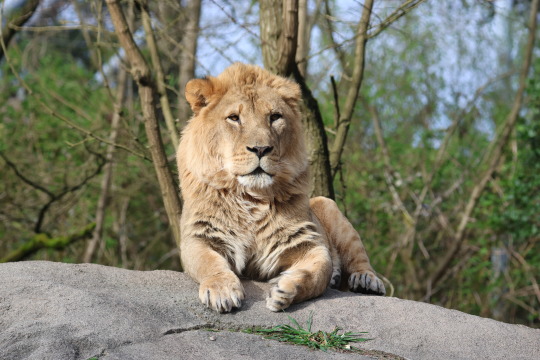
Notice anything odd about him? He's got one of those hilarious awkward teenager manes. Except... this cat is nine years old.
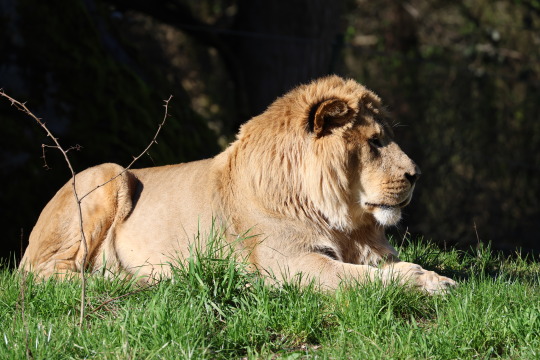
I was, of course, immediately curious.
Manes serve a lot of purposes for male lions, including being an indicator of health and fitness - it's actually a sexually selected trait and a social signal. Mane texture / hair quality / length is dependent on nutrition and the body having energy to grow (and carry around!) that much hair! The color is also a signal: males with darker manes have been found to have higher testosterone levels.
In one research report, wild males were much more likely to avoid a lion decoy when it had a longer or darker mane - but the girls really loved a dark mane. It's thought this is because a long, dark mane is an indicator of mate quality. Males with longer, darker manes have higher testosterone and were pretty healthy: meaning they had more energy for fighting, had a better chance of recovering if they got injured, and generally had a higher rate of offspring survival. Manes matter!
So, back to Tandie. He was actually born at the Woodland Park Zoo in 2014 alongside two brothers, to dad Xerxes and mother Adia.
This was Xerxes (rip).
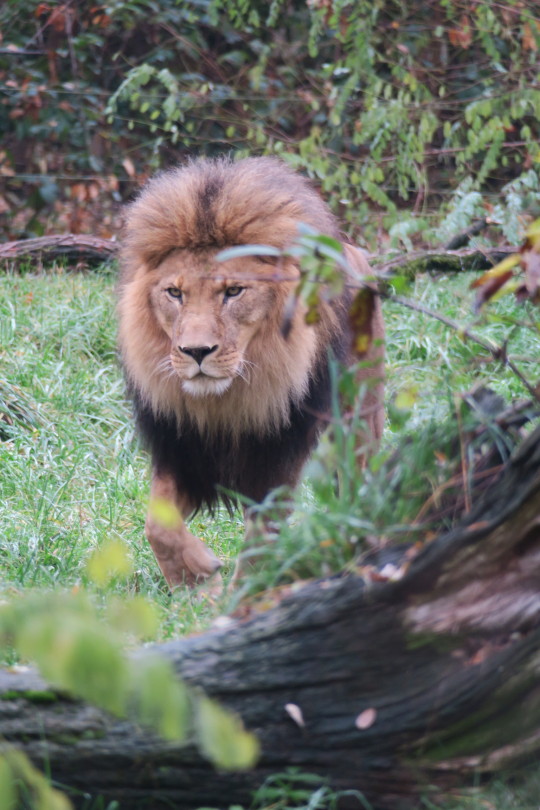
Obviously, a very large, dark, lush mane on Xerxes here. So where did these blond muttonchops come from on his son?
I asked the zoo docents and got an answer that didn't make a lot of sense. They told me that after the three cubs grew into adolescents, they were moved to the Oakland Zoo together. But living together suppressed his testosterone, and he never grew a mane.
Hmmmm.
Here's a photo from 2016, when the brothers debuted at Oakland. They're a year and a half old in this photo.
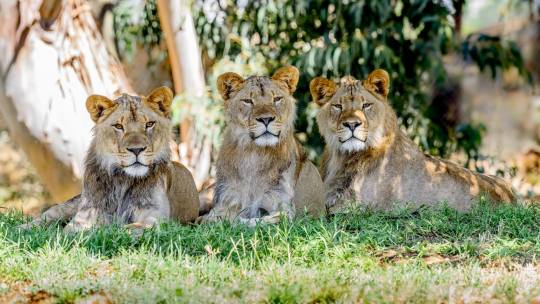
(Photo Credit: Oakland Zoo)
And here's from an announcement for their third birthday.

(Photo credit: Oakland Zoo)
Okay, so these dudes obviously all were growing manes as of 2017. I think Tandie is the one on the left in the first photo, and laying down in the middle on the second. What happened?
I was just in the Bay Area for a zoo road trip, of course I went to Oakland and tracked down a docent to ask some questions.
It turns out that shortly after the brothers turned three, they started acting like adult male lions: they started scuffling regularly. It's a normal social thing for male lions to live in groups, called coalitions, but according to my lion experts there's generally a baseline level of some social jostling within them. It wasn't quite clear from what the docent said if they couldn't manage the boys together, or if they just wanted to avoid the scratches and small wounds that result from normal lion behavior. Regardless, they put all three of the boys on testosterone blockers in order to be able to keep them together as a social group.
Now, I don't know a lot about the use of hormone alteration as a form of captive animal management, except in the case of birth control. I don't think it's something that's unethical - there was just a webinar on it that I saw go by - but I don't think it's commonly done with big cats. Lions have kind of complicated reproductive cycles, and for instance, we've been learning that female lions can take much longer to come into estrus again than expected after coming off hormonal birth control.
In males, testosterone blockers (or being neutered) means they lose their manes. This is why a lot of rescues will do a vasectomy on their males instead of a neuter - it allows them to keep their mane and the social signals that accompany it.
Tandie returned home to Woodland Park Zoo after Xerxes passed in early 2022, and the docent told me all of the lions had been off their blockers "for while." I'd guess those things happened around the same time, since bringing the trio down to a duo at Oakland would reduce some of the social tensions.
Hormones are such interesting things, though. One of Tandie's brothers has a full mane again, and the other is still totally mane-less.
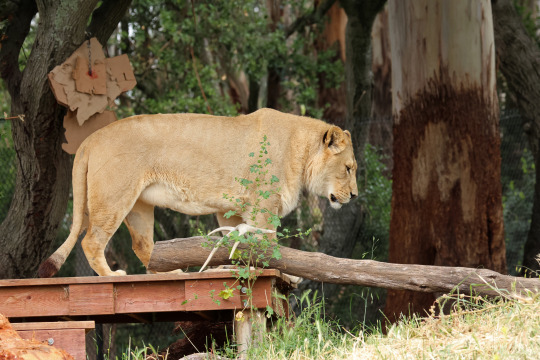
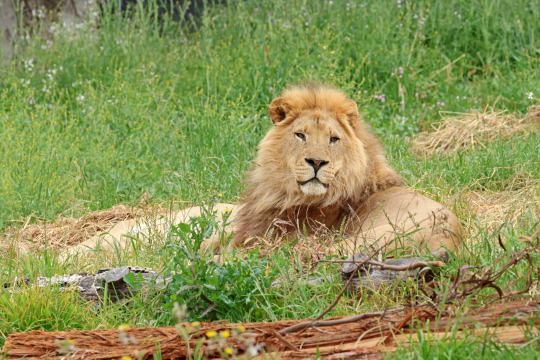
As for Tandie, his mane is growing back in, and it looks like he might rival his dad for length and coloration.
He started here, in February:

Yesterday:

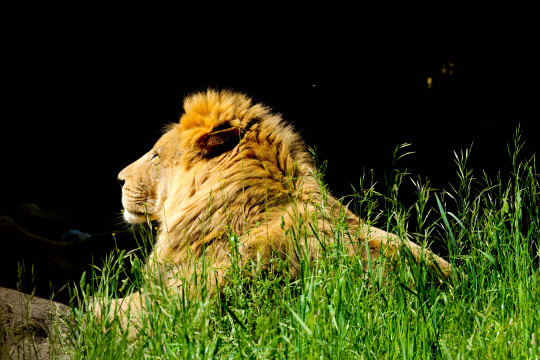
What a difference four months (and maybe proximity to a girl) makes!
#big cats#lion#african lion#big cat behavior#zoo animals#zoo animal welfare#captive animal management#zoos
8K notes
·
View notes
Text
BIG LION

oh god...
hes among us---
1 note
·
View note
Text
Today's Sea Lion Is: Listening Intently

#submission#i work with these guys at my job :^)#lil guy on the right is a lot bigger now!!! but he still hasn't grown into those flippers.#big guy on the right is why we have to do escaped animal drills now LMAO#< Commentary from submitter!#seals#pinniped#daily#mod ribbon#otariidae#california sea lion
2K notes
·
View notes
Text
2K notes
·
View notes
Text
As much as we Americans give guff (and rightfully so) to Europeans for being so weird about nature, let's not forget that Americans are super not immune to it either.
Americans insist constantly that coyotes are going to attack children (your child is exponentially more likely to be seriously injured by their own dog) or that coyotes lure dogs to their deaths by leading them into the waiting pack (your stupid idiot dog with no recall chased a pack of coyotes that fought back and suddenly the coyotes are at fault here?)
But the one that drove me insane the most was the guy who shot the first opossum to be documented this far north in hundreds of years because he was afraid that a 3 pound opossum was going to kill his dog.
It's barely bigger than a guinea pig I promise you it's not going to eat your fucking husky you brain dead idiot loser. Stop being such a mindless coward.
#this isn't even including the people who insisted they saw a mountain lion and when they posted the pic it was a coyote#not even a big coyote either
8K notes
·
View notes
Text


sleeping puma - photos by me
1K notes
·
View notes
Video
undefined
tumblr
Sneezing appears to bring up complex emotions for lions..
(Source)
#sneezing#sneeze#lion#lions#lions of tumblr#nature#wildlife#animals#big animals#big cat#cats#aww#cute#wholesome#video#babyanimalgifs
9K notes
·
View notes
Text
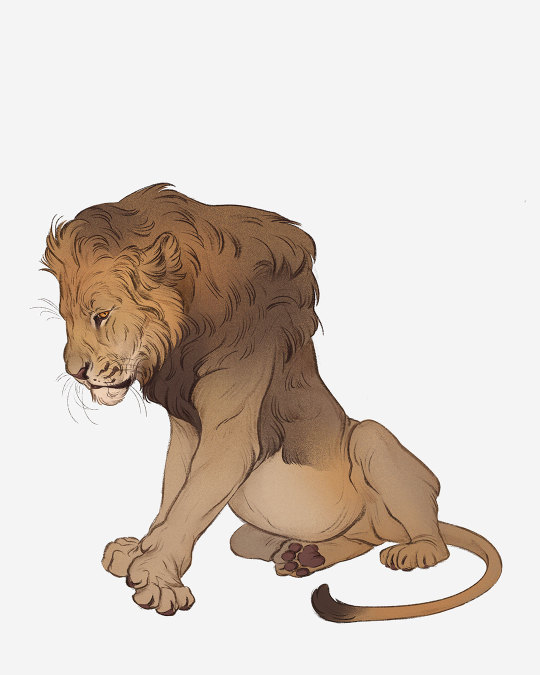

Lion for febroary.
I have a lot of ongoing projects currently and a little spare time for personal art, but I really want to make at last six drawings for this year's challenge. Please cross your fingers!
Which wild cats would you like me to draw? Let me know in the comments!
#lion portrait#lion drawing#lion#lions#lion illustration#wildlife art#wildlife drawing#big cat art#big cat#big cats#wild cat#wild cats#homedecor#cat poster#lion poster#lion print#prints#animal print#wild animal#febroary#febroary2024#febroary challenge#drawing challenge#art challenge
2K notes
·
View notes
Text


marcilley
#marcille donato#dungeon meshi#delicious in dungeon#dungeon meshi spoilers#my art#Linktoo art#that crazy poofy dress she wears changed so much of how i see poofy dresses... normally I'm not really a big fan of poofy dresses#like I preferred more long flowy dresses... but wow this really opened my mind more. the taste#that fit serves so hard... I love how her hair bandana frames her face how the wings (associated w the lion) cover her pointy ears#iconic fit
2K notes
·
View notes
Text
Folk were really into the post I made about Tandie, the zoo lion with a (then) undergrown mane due a period of time on testosterone blockers. He's having quite the glow up this summer.
But!
Did you know that manes are hormone dependent in both sexes of lion?
Let's talk about maned lionesses!
To recap the previous post quickly: the existence of a mane, and it's color, appear to be pretty heavily androgen-dependent. Neutered males or males put on testosterone blockers, like Tandie was, will drop their manes - but like Tandie, if taken off the meds, it will generally grow it back. Darker manes are indicative of higher testosterone levels, and long/lush manes are generally a good signal of a male's fitness and mate quality. Females seem to show a preference for males with longer, darker manes and other males will preferentially avoid scuffles with them. (Yes, as many comments have pointed out, that means Scar was actually a hunk. Do with that as you will.)
The fascinating thing about androgens being linked to manes in lions is that it goes both ways - females with higher levels will also grow manes!
Mane growth in females lions is most commonly seen with elderly animals who have stopped cycling and are basically in lion menopause. And they have to get pretty old for it to happen - captive lions generally only live into their late teens and early second decade, and most of the maned ladies I know about started growing manes around like, seventeen.
Not all old female lions grow manes, but some of the career cat people I've talked to said it happened to about a quarter of the females they've worked with over the years. Which... is an interesting contrast to the news articles about Zuri, who we'll meet in a bit, that breathlessly reported in 2022 that her mane growth "left scientists baffled."
Old lady lion manes are just... precious. They grow in first at the chest and then around the sides or on the back of the head, but they don’t normally get the length, density, and connectivity seen in the mane of an adult male. It leaves the lionesses manes kind of awkward, in the way I associate with very young males, and they're absolutely adorable. Prepare yourself for the photo spam.
I have to start with Daisy, because she's the only maned lioness I've had the privilege to meet in person.
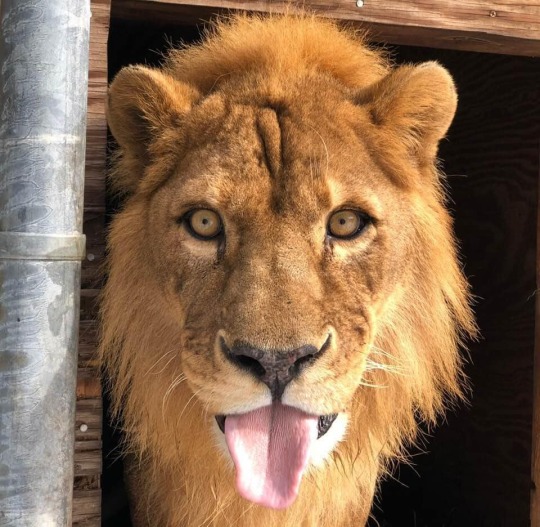
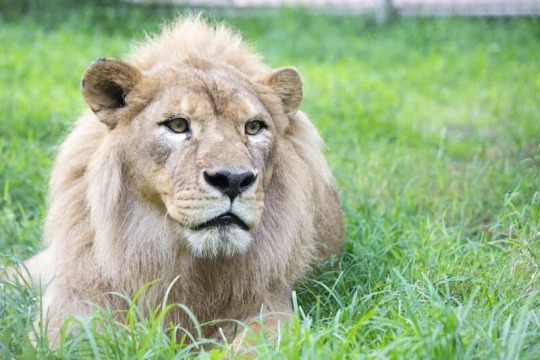

I don't know exactly when she started growing her mane, but she was over 20 years old when she passed in 2019 with these luscious locks.
Here's another female at the same facility, named Adeena. On the left is a photo of her from 2021, on the right is from this spring (I think she's mid-sneeze in the photo). She turns 20 in October.

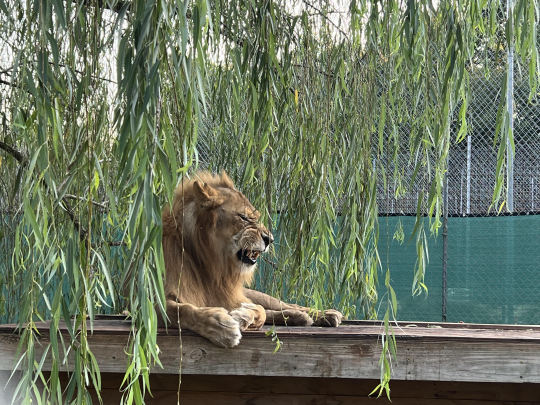
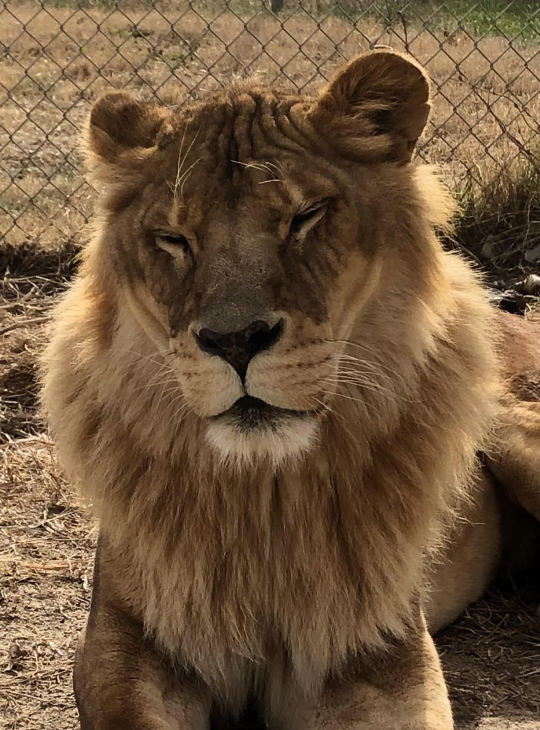
If you've heard about maned lionesses before, it’s probably because of Zuri, at Topeka. She’s the most recent one to get media coverage and she went a little viral.

(Just a side note here, but I have some strong feelings about knowledge loss in the exotic animal management world due to political/philosophical schisms. This is one of those topics where it's clear: Topeka told a reporter that the zoo had “never" heard of this happening before, but it's common enough to be well known as a thing in other sectors of the exotic cat world. There's so much expertise and knowledge being lost due to infighting between accrediting groups, and it drives me up a wall).
Anyway. Zuri had one of the best manes I've seen on an elderly lioness. It grew long and lush and she totally could have done shampoo commercials. I mean, look at this.

Zuri lived with her sister, who didn't grow a mane in her old age. Here's the two of them together, Zuri on the left, Asante on the right.

We don't completely know what's going on with these golden girls to cause them to grow manes. It's theorized to be related to the end of estrus and higher levels of androgenic hormones, although it's not clear if that's just due to lower levels of other hormones during "meownopause" or if there's something else also going on.
There was some speculation with Zuri's mane growth that it was caused by the death of the male she lived with, in some biological need to "take over the role." The zoo dismissed that idea pretty quickly, and it makes sense, although there is one other instance where I've heard of that happening before.
The cat people I've talked to say that older lionesses who grow manes don't tend to act differently - they're not taking over new social roles in their prides or anything. Sometimes they can be less active, or be a little more nervous around males, and want to be left alone more, but it was emphasized to me that those behaviors could also just be associated with the fact that manes tends to develop in elderly lionesses.
The mane growth can happen pretty quickly, as we saw in the photos I've posted of Tandie over the last year. Here's Bridget, from the Oklahoma Zoo. The left photo was taken in March of 2017 and the right in November - look how much hair she gained over six months!
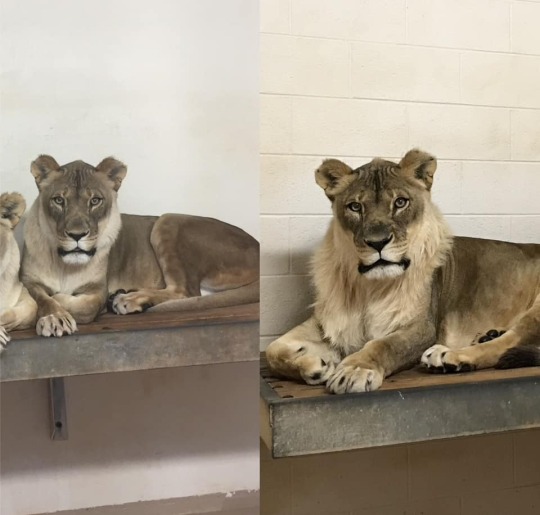
The zoo did some research into what might have cause Bridget's mane growth, and found that she had elevated levels of androstenedione, which is a hormone that can be converted by the body into either testosterone or estrogen, depending. In AFAB people, it's known to have a masculinizing effect. The zoo theorized that this was the cause of her mane growth, and that the elevated levels might have been caused by a benign tumor. Fascinatingly, though, blood draws revealed that her testosterone levels were the same as her mane-less sister, Tia.
Tia is on the left in the photo below, Bridget and the beginnings of her mane are on the right. Bridget was 17 when her mane started growing in.

I don't think there's any formal hypothesis that there might be a genetic component to lionesses growing manes in old age, but it's interesting to note that one of Tia's daughters, Zari, also grew a mane. (And she grew it young! It started around age 13, interestingly, also right after their male died). She's on the left in the photo below.
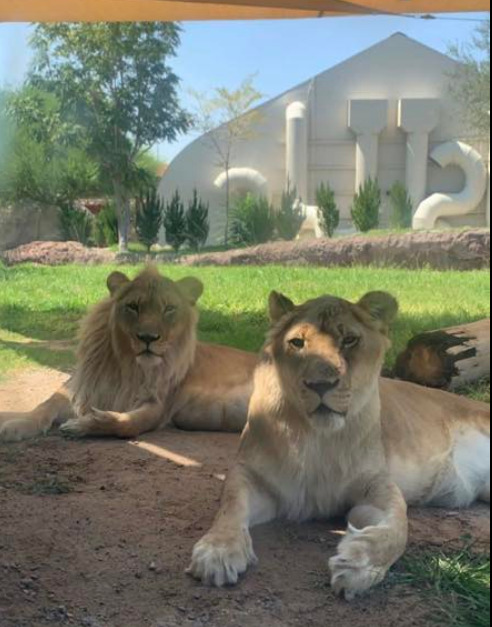
And to circle back around to where we began: Tandie is related to a number of maned ladies! His father, Xerxes, was Bridget's son; Zari was Xerxes' half-sister.
Here's a few more beautiful maned ladies to leave you with. In order, Ngala, Pepper, Skye, and Dandy Lion.
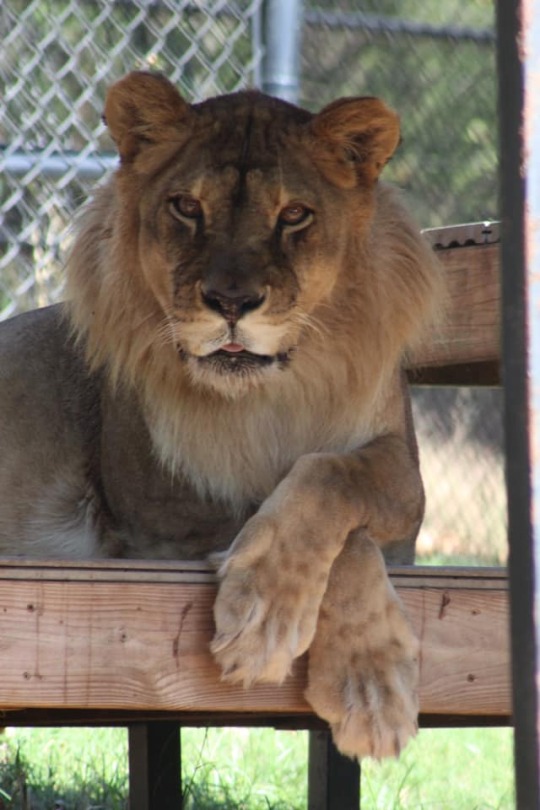
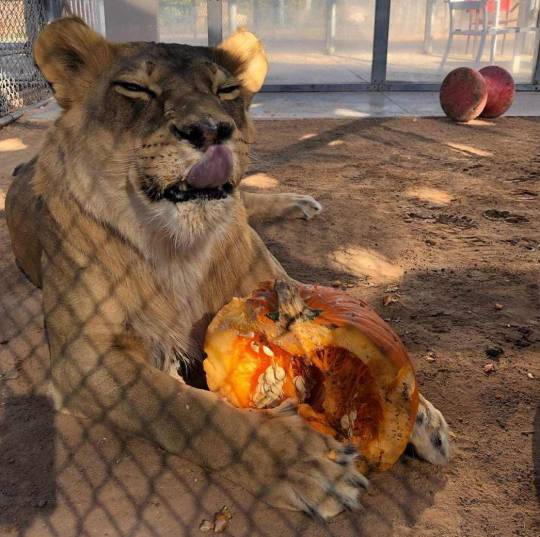
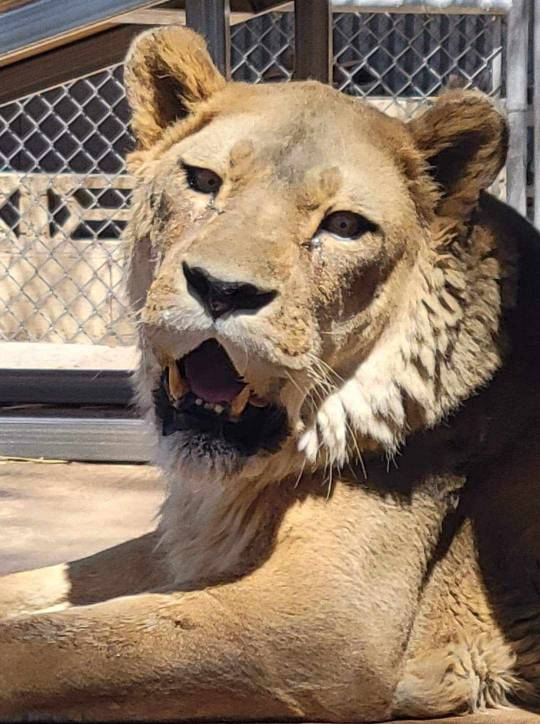
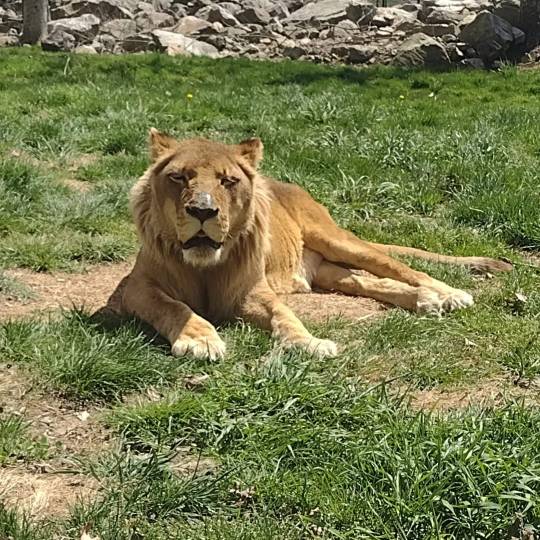
Next up, and last in this lion mane series, is the story of five younger lionesses in Botswana who not only have manes but also express a range of masculine behaviors.
.
.
.
A huge thanks to all the folk who shared photos of and stories about their golden girls for this post: M. Townsen, S.W. Simpson, E. Day, S. Cook, M. Stinner, M. Paul, K. Vanaman, D. O'Halloran, R. Simpson, D. Souffrant.
2K notes
·
View notes
Text
#lion#lions#big cats#exotic cats#wild cats#animals#beautiful animals#exotic animals#wildlife#wild world#yolas0
623 notes
·
View notes
Text

Lioness. Paper, ink. Georgy Evlampievich Nikolsky (1906-1973)
MutualArt
1K notes
·
View notes